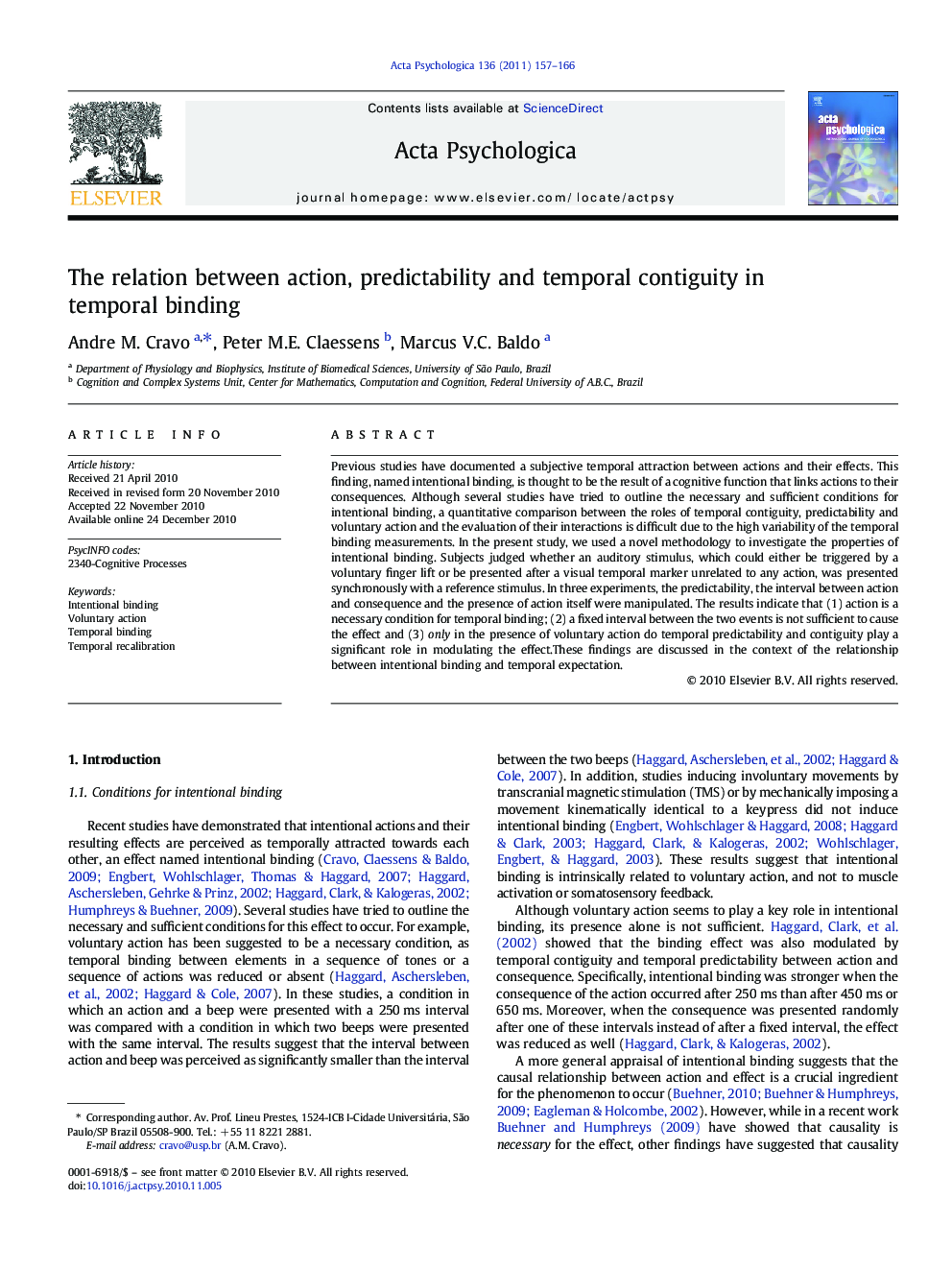| Article ID | Journal | Published Year | Pages | File Type |
|---|---|---|---|---|
| 920315 | Acta Psychologica | 2011 | 10 Pages |
Previous studies have documented a subjective temporal attraction between actions and their effects. This finding, named intentional binding, is thought to be the result of a cognitive function that links actions to their consequences. Although several studies have tried to outline the necessary and sufficient conditions for intentional binding, a quantitative comparison between the roles of temporal contiguity, predictability and voluntary action and the evaluation of their interactions is difficult due to the high variability of the temporal binding measurements. In the present study, we used a novel methodology to investigate the properties of intentional binding. Subjects judged whether an auditory stimulus, which could either be triggered by a voluntary finger lift or be presented after a visual temporal marker unrelated to any action, was presented synchronously with a reference stimulus. In three experiments, the predictability, the interval between action and consequence and the presence of action itself were manipulated. The results indicate that (1) action is a necessary condition for temporal binding; (2) a fixed interval between the two events is not sufficient to cause the effect and (3) only in the presence of voluntary action do temporal predictability and contiguity play a significant role in modulating the effect.These findings are discussed in the context of the relationship between intentional binding and temporal expectation.
